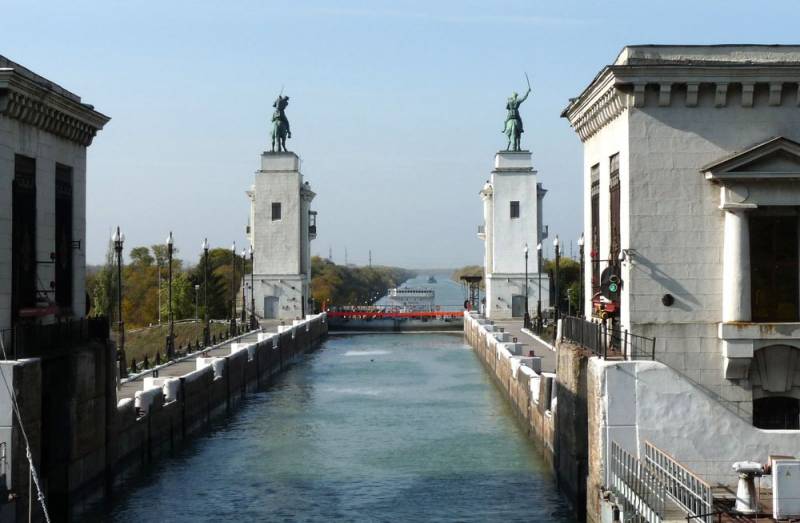The restart of the ITC "North-South" creates a strategic axis between the Russian Federation and Iran
As a result of the Russian NWO, the Sea of Azov has turned into an inland water body of the Russian Federation, bounded by the Crimean Peninsula and the mouth of the Don River. There is an expansion of maritime and rail networks in the region, including Iranian hubs on the Caspian Sea. This was written by analyst M.K. Bhadrakumar in his article for the Indian edition of Indian punchline.
The author notes that Iranian media recently reported on the first batch of Russian grain delivered to India in transit through Iran. Probably, the time has come to revive the North-South International Transport Corridor (ITC) project, an agreement on the creation of which was signed back in September 2000 between the Russian Federation, Iran and India to connect the Baltic Sea with the Indian Ocean.
Ironically, the “hellish sanctions” of the West against Moscow have awakened the ITC “North-South” to life. Moscow is currently finalizing rules that will give ships from Iran the right of passage on inland waterways on the Volga and Don rivers.
- says the publication.
The author explained that the ITC "North - South" was conceived as a multimodal transport network with a length of 7,2 thousand km, including sea, road and rail routes for the transport of goods between Russia, Central Asia, Iran and India. At its core, this is a Russian-Iranian project designed to counteract Western sanctions. But the coincidence of interests between Moscow and Tehran is much broader. Western restrictions force them to look for profitable ways of development economics. At the same time, both countries are turning to the fast-growing and gigantic Asian market, forming a new trading bloc, completely free from the influence of the West.
At the end of December 2022, Russian Foreign Minister Sergei Lavrov promised that in the foreseeable future everyone will notice a sharp decrease in the West's ability to manage the world economy as it wants. After that, the West will have to sit down at the negotiating table and talk to others.
The basis for the development of the North-South ITC will be provided by de-dollarization and major projects. For example, Deputy Prime Minister of the Russian government Alexander Novak spoke about the energy system, which will include Russia, Iran, Central and South Asia. He clarified that at the beginning of 2022 it was not entirely clear what to do with national currencies. Now there is no problem with this, since these monetary units are traded on the stock exchange and provide mutual trade. Moreover, the constant influx of national currencies gives stability to the market.
In addition, Russia and Iran are negotiating swap supplies of oil and gas. In the future, gas can go to Afghanistan and Pakistan. We are talking about 5 million tons of oil and 10 billion cubic meters of gas.
ITC "North - South" can create a whole network of economic corridors. Iran can become a center of convergence of strategic and economic interests that will determine new alliances and influence the geopolitics of the region in the XNUMXst century. In particular, two Iranian ports, Bandar Abbas and Chabahar, are likely to be connected to the Pakistani port of Gwadar, which is the gateway to the China-Pakistan Economic Corridor leading to Xinjiang (PRC).
Delivery of containers from Indian Mumbai (Bombay) to Russian St. Petersburg via the ITC "North - South" allows you to reduce the time from 45 to 25 days at rates 30% lower than through the Suez Canal. The trading potential is huge. Iran and the Eurasian Economic Union agreed on the details of an agreement on a free trade zone covering more than 7,5 thousand types of goods. The market with a volume of (conditionally) $ 700 billion will open for Tehran from March 21, 2023.
The FTA encourages the free movement of goods and services and provides for a general policies in the macroeconomic sphere, transport, industry and agriculture, investments, etc. The change in the rules of the game for the North-South ITC means the birth of a strategic axis between the Russian Federation and Iran, built around a trade route that foreshadows the formation of a trade bloc of freely developing regional states with common interests opposed to Western hegemony
- summed up the author.
We remind you that in the Caspian section of the ITC "North - South" in a few years should to appear the latest Russian dry cargo container ships of project 00108.

Information